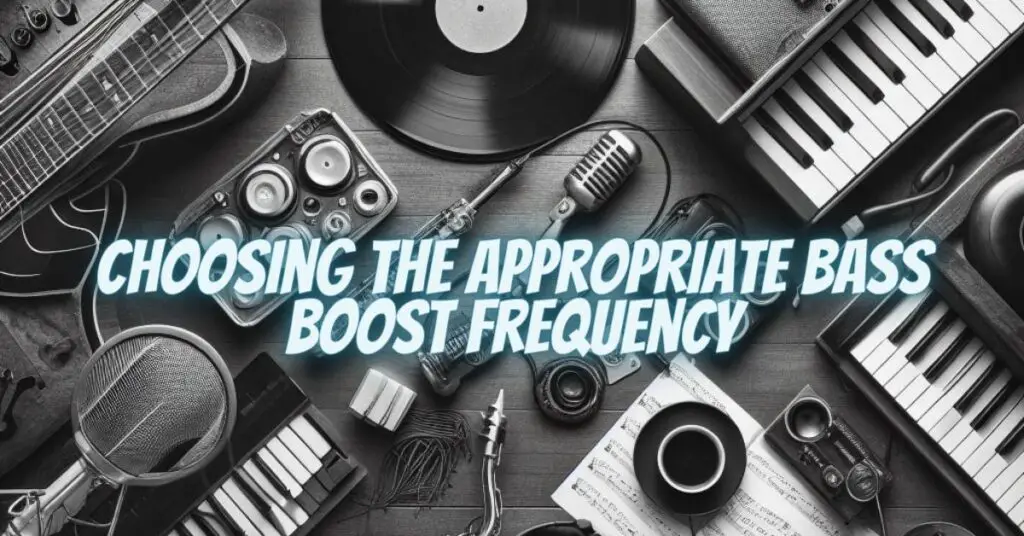Achieving the perfect bass sound is a common pursuit for audiophiles, music producers, and even casual listeners. Bass frequencies play a crucial role in the overall music experience, adding depth, warmth, and power to the sound. But the question remains, what Hz should you boost your bass to achieve that ideal, thumping low-end? In this comprehensive guide, we’ll delve into the intricacies of bass frequencies, the science behind it, and how to boost your bass effectively for your specific preferences and audio setup.
Understanding Bass Frequencies
Before we determine the ideal Hz range for boosting bass, it’s essential to understand the fundamentals of bass frequencies. Sound frequencies are measured in Hertz (Hz), with lower values representing lower, deeper pitches. In the context of bass, this typically ranges from around 20 Hz to 250 Hz. Let’s break down this range:
- Sub-Bass (20-60 Hz): This is the ultra-low end of the spectrum, responsible for those deep, rumbling vibrations that you can feel more than hear. Sub-bass frequencies add a sense of weight and power to music.
- Bass (60-250 Hz): The core of the bass range, this is where you find the foundation of your music’s low-end. It adds warmth and body to your audio.
The Ideal Bass Frequency Range
Determining the ideal bass frequency range to boost depends on several factors, including personal preference, musical genre, and the capabilities of your audio equipment. However, a good starting point is to focus on the upper end of the sub-bass and lower end of the bass frequencies.
- Around 40-80 Hz: Boosting in this range can provide a rich, deep bass that is felt rather than heard. This can be suitable for genres like hip-hop and electronic music, where a powerful low-end is essential.
- 80-120 Hz: This range adds warmth and body to your audio without making it overly boomy. It’s suitable for a wide range of musical styles, including rock, pop, and jazz.
Remember that boosting bass frequencies excessively can result in distortion, muddiness, and an unbalanced mix. The key is to find the sweet spot that complements your music without overpowering it.
Tailoring Bass Boosts to Your Preferences
Every listener has different tastes, so the ideal bass frequency range will vary from person to person. Here’s how you can customize your bass boost based on your preferences:
- Experiment with EQ Settings: Many audio devices come with built-in equalizers (EQ) that allow you to adjust bass levels. Start with a flat EQ, then gradually boost bass frequencies within your preferred range while listening to your music. Tweak the settings until you achieve the desired bass level.
- Listen Critically: Pay close attention to how the bass sounds. Is it too weak, too boomy, or just right? Trust your ears, and make adjustments accordingly.
- Reference Tracks: Compare your music to professionally mixed and mastered tracks in the same genre. This can give you a reference point for the level of bass you want to achieve.
- Room Acoustics: Keep in mind that the acoustics of your listening environment can impact how you perceive bass. Experiment with room treatment or speaker placement to optimize your bass response.
Balancing Bass with Other Frequencies
Boosting bass frequencies isn’t just about increasing the low-end; it’s about maintaining balance with the rest of the audio spectrum. Overemphasis on bass can drown out other elements in your music. To achieve a harmonious sound:
- Consider the Mid-Range: Make sure that the mid-range frequencies, which are crucial for vocals and instrument clarity, aren’t overshadowed by boosted bass.
- Tweak Treble: Adjust the treble frequencies to maintain a sense of airiness and detail in the music. Balancing the high-end with the low-end creates a more immersive listening experience.
- Use a Subwoofer: If you’re serious about enhancing your bass, investing in a subwoofer can be a game-changer. Subwoofers are designed to handle low-frequency reproduction, taking the load off your main speakers and improving bass response.
Finding the ideal Hz range for boosting bass is a subjective process that depends on your musical preferences, equipment, and listening environment. The key is to experiment, trust your ears, and aim for a balanced sound that complements your music without overpowering it. By understanding the fundamental bass frequencies, using EQ settings, and considering room acoustics, you can achieve the perfect bass that enhances your audio experience, whether you’re a music producer or a devoted music enthusiast.


